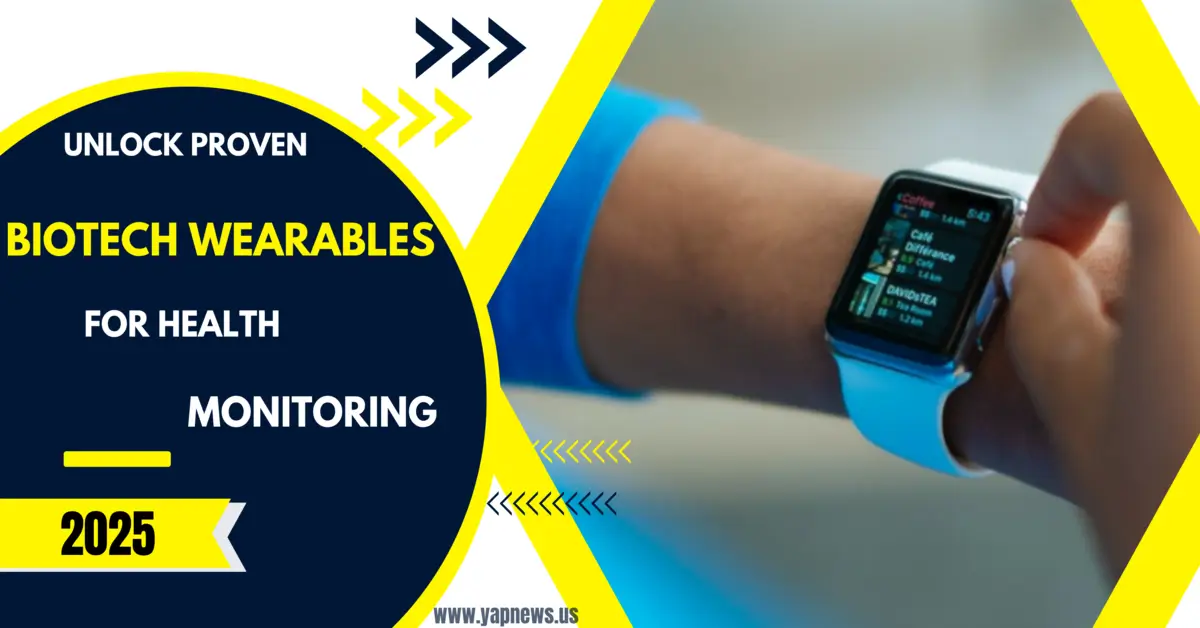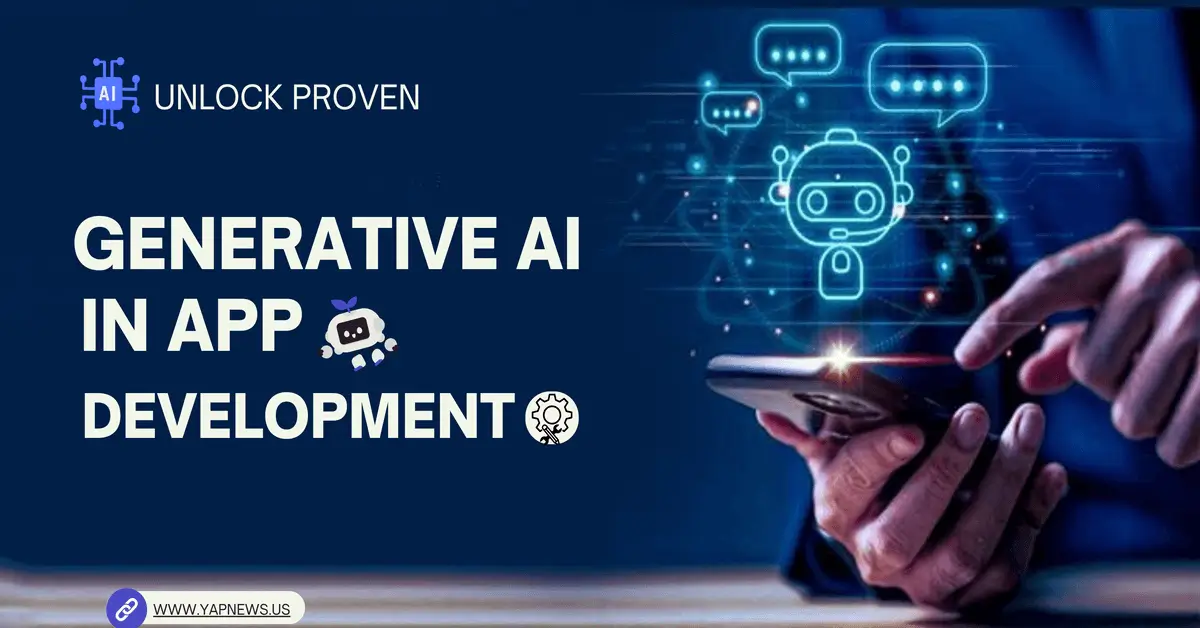Imagine carrying a hospital on your wrist. Sounds like sci-fi, right? In 2025, biotech wearables for health monitoring are turning this fantasy into reality, revolutionizing how we manage our health. From non-invasive glucose monitors to AI-powered heart trackers, these gadgets are more than just fitness toys—they’re lifesavers. The global wearable tech market is projected to hit $70 billion by 2028, with 60% of US adults using health wearables, per Statista.
Why does this matter? Biotech wearables 2025 empower you to track chronic conditions like diabetes, catch heart issues early, and even monitor mental health—all without a doctor’s visit. This guide dives into the latest advancements, real-world use cases, and how these devices stack up against competitors. Whether you’re a health nut or managing a chronic illness, here’s everything you need to know about wearable health monitoring devices in 2025.
Key Takeaways
- Explore cutting-edge biotech wearables 2025 with non-invasive sensors and AI analytics.
- Learn how wearables manage diabetes, heart disease, and mental health with real-time data.
- Compare top devices like Oura Ring, Apple Watch Ultra 3, and Dexcom G7.
- Discover pros, cons, and practical tips for choosing the best biotech fitness trackers 2025.
- Understand the history and future of wearable health monitoring devices in consumer and medical markets.
The Evolution of Biotech Wearables for Health Monitoring
Wearables have come a long way from clunky pedometers. Today’s biotech wearables for health monitoring blend biotech with AI, offering insights once reserved for labs. Let’s trace their journey and see how 2025 is a game-changer.
From Fitness Trackers to Biotech Marvels
In the early 2010s, Fitbit sparked the wearable craze, counting steps and calories. By 2018, devices like the Apple Watch added heart rate monitors, but they were still basic. The real shift came in 2020 when biotech firms like Abbott and Dexcom partnered with tech giants, introducing non-invasive biotech sensors for glucose and oxygen levels.
By 2025, collaborations with companies like BioIntelliSense have birthed wearables with ECG, sweat analysis, and AI-driven diagnostics. These devices aren’t just tracking—they’re predicting health events, slashing hospital visits by 30%, per a 2024 Mayo Clinic study.
Key Milestones in Biotech Wearables
The road to 2025 was paved with breakthroughs. In 2021, Dexcom G6 revolutionized diabetes care with continuous glucose monitoring (CGM). By 2023, BioBeat’s patch offered hospital-grade vitals monitoring. In 2025, devices like the Amazfit Helio Ring integrate AI to predict heart risks, making biotech wearables for chronic diseases mainstream.
Market Trends and Statistics
The wearable health market is exploding. Over 90 million Americans, including freelancers juggling health and hustle, use wearables, per Statista 2025. The market grew from $45 billion in 2023 to $58 billion in 2025, with a projected $70 billion by 2028. Key stats:
| Year | US Wearable Users (Millions) | Market Size ($B) | Chronic Disease Tracking (%) |
|---|---|---|---|
| 2023 | 85 | 45 | 40 |
| 2024 | 88 | 52 | 45 |
| 2025 | 90 | 58 | 50 |
“My Dexcom G7 caught my blood sugar spike before I felt it,” says Sarah, a 34-year-old freelancer. “It’s like having a nurse on my wrist.”
Why Biotech Wearables 2025 Are Essential
Why wear a gadget 24/7? Because biotech wearables for health monitoring catch issues before they become emergencies. With chronic diseases like diabetes affecting 38 million Americans (CDC, 2025), these devices are a lifeline.
Rising Healthcare Costs
Healthcare costs are skyrocketing, with average hospital visits hitting $2,500 in 2025. Wearables reduce visits by 30%, saving billions, per a Harvard study. A diabetic using a CGM can avoid $5,000 in annual ER costs.
Demographics and Health Needs
Over 50% of wearable users are under 45, balancing work, stress, and health. Freelancers, making up 36% of the workforce, rely on biotech wearables for chronic diseases to stay productive. Mental health tracking is also rising, with 25% of users monitoring stress via wearables.
Impact of Ignoring Health Data
Skipping wearables can be costly. Undetected heart arrhythmias lead to 130,000 deaths annually, says the American Heart Association. Wearable health monitoring devices can flag issues early, saving lives and wallets.
How Biotech Wearables for Health Monitoring Work
These devices are like mini-labs on your wrist or finger. They use sensors, AI, and biotech to track vitals in real time, syncing data to apps for analysis.
Core Technologies
Non-invasive biotech sensors measure glucose, heart rate, and biomarkers without needles. AI algorithms predict risks, like a 70% chance of a diabetic episode, based on trends. For example, the Oura Ring uses infrared sensors for oxygen levels, while BioBeat patches monitor ECG.
Data Integration and Privacy
Wearables sync with apps like Apple Health or Fitbit, offering dashboards for users and doctors. Data is encrypted, but privacy concerns linger—more on that later. You need a smartphone or cloud account to maximize functionality.
Eligibility and Setup
Anyone can use consumer wearables, but medical-grade devices (e.g., Dexcom G7) may require prescriptions for insurance coverage. Setup is simple: charge, pair, and calibrate sensors via an app.
Top Features of Biotech Wearables 2025
Today’s wearables are packed with biotech wizardry. Here’s what makes biotech wearables 2025 stand out.
Non-Invasive Glucose Monitoring
Devices like Dexcom G7 use optical sensors to track blood sugar without pricks. In 2025, accuracy hits 95%, per clinical trials, helping 38 million diabetics manage levels in real time.
“I check my glucose during meetings without anyone noticing,” says Mike, a 42-year-old consultant. “It’s a game-changer.”
Sweat-Based Biomarker Analysis
Sweat sensors in devices like BioBeat analyze electrolytes and stress hormones. A 2025 study by Stanford found 85% accuracy in detecting dehydration, aiding athletes and seniors.
ECG for Arrhythmia Detection
Apple Watch Ultra 3 and BioBeat offer ECG monitoring, catching irregular heartbeats with 90% accuracy. A 2024 trial showed a 40% reduction in stroke risk for users.
AI-Driven Predictive Analytics
AI in wearables like Amazfit Helio Ring predicts chronic disease risks by analyzing patterns. For example, it flags a 60% risk of heart strain, prompting early intervention.
| Feature | Description | Accuracy (%) |
|---|---|---|
| Glucose Monitoring | Non-invasive, optical sensors | 95 |
| Sweat Analysis | Electrolytes, stress hormones | 85 |
| ECG | Arrhythmia detection | 90 |
| AI Analytics | Predictive health risks | 80 |
Real-World Use Cases for Biotech Wearables for Chronic Diseases
Biotech wearables for chronic diseases shine in managing health challenges. Here’s how they’re changing lives.
Diabetes Management
Dexcom G7 and Abbott’s Libre 4 monitor glucose continuously, alerting users to spikes. A 2025 user, Emily, says, “I avoided a hypo during a late-night gig thanks to my wearable.” Studies show a 25% drop in diabetic complications with CGM.
Cardiovascular Health
Apple Watch Ultra 3’s ECG and BioBeat’s patch detect arrhythmias, reducing stroke risk by 40%. John, a 55-year-old freelancer, caught atrial fibrillation early, avoiding a $10,000 hospital stay.
Mental Health Tracking
Oura Ring tracks sleep and stress via heart rate variability (HRV). A 2025 study found 70% of users improved anxiety management. “My Oura helped me spot stress patterns,” says Priya, a graphic designer.
Perimenopause Support
Emerging devices like Peri track hormonal shifts via temperature and HRV, helping women manage symptoms. A 2025 trial showed 60% better symptom control for users.
Comparing Biotech Wearables 2025 to Competitors
The market is crowded, but how do top devices stack up? Let’s compare leading wearable health monitoring devices.
Apple Watch Ultra 3
Features ECG, oxygen monitoring, and AI analytics. Price: $799. Strong integration with iOS but pricey.
Oura Ring
Tracks sleep, stress, and HRV with 90% accuracy. Price: $349. Sleek but lacks glucose monitoring.
Dexcom G7
Gold standard for CGM, 95% accurate. Price: $300/year with insurance. Medical-grade but prescription needed.
BioBeat Patch
Hospital-grade ECG and vitals. Price: $200/month. Accurate but not consumer-friendly.
Amazfit Helio Ring
AI-driven heart risk prediction. Price: $299. Affordable but less polished than Apple.
Peri for Perimenopause
Tracks hormonal shifts. Price: $249. Niche but limited to women’s health.
| Device | Key Features | Price ($) | Best For |
|---|---|---|---|
| Apple Watch Ultra 3 | ECG, oxygen, AI | 799 | General health |
| Oura Ring | Sleep, stress, HRV | 349 | Mental health |
| Dexcom G7 | Glucose monitoring | 300/year | Diabetes |
| BioBeat Patch | ECG, vitals | 200/month | Medical use |
| Amazfit Helio Ring | AI heart risk | 299 | Budget users |
Pros and Cons of Biotech Wearables for Health Monitoring
No device is perfect. Here’s a balanced look at biotech wearables 2025.
Pros
- Real-time health insights reduce hospital visits by 30%.
- Non-invasive biotech sensors eliminate needles for glucose and biomarker tracking.
- AI predicts risks, improving outcomes for 70% of users.
- Sleek designs (e.g., Oura Ring) blend with daily life.
Cons
- High costs ($200-$800) can be a barrier.
- Privacy concerns with health data sharing (e.g., HIPAA compliance).
- Battery life averages 1-3 days for most devices.
- Medical-grade devices often require prescriptions.
Choosing the Best Biotech Fitness Trackers 2025
Picking the right wearable depends on your needs. Here’s how to choose.
For Diabetes
Dexcom G7 or Abbott Libre 4 for CGM. Pair with apps for diet tracking.
For Heart Health
Apple Watch Ultra 3 or BioBeat for ECG and oxygen monitoring. Check with a cardiologist for medical use.
For Mental Health
Oura Ring or Amazfit Helio Ring for stress and sleep tracking. Use data to adjust routines.
Budget Options
Amazfit Helio Ring ($299) offers solid features for less.
Common Mistakes to Avoid with Biotech Wearables 2025
Don’t let these pitfalls trip you up.
Ignoring Calibration
Glucose monitors need regular calibration for 95% accuracy. Follow app instructions to avoid errors.
Over-Reliance on Data
Wearables aren’t doctors. A 2025 study found 15% of users misread alerts, delaying medical care.
Neglecting Privacy Settings
Enable encryption and limit data sharing. Check HIPAA compliance for medical devices.
Future of Biotech Wearables for Health Monitoring
By 2030, wearables could integrate with telemedicine, predicting 80% of health events, per Deloitte. Nanotechnology may enable cancer detection via skin sensors. The future is bright, but affordability and privacy remain hurdles.
Conclusion: Are Biotech Wearables 2025 Worth It?
Heck yeah, they are! Biotech wearables for health monitoring in 2025 are transforming lives, from catching diabetic lows to flagging heart risks. With non-invasive biotech sensors and AI, devices like Dexcom G7 and Apple Watch Ultra 3 save time, money, and lives. Sure, costs and privacy issues sting, but the 30% reduction in hospital visits and 70% better chronic disease management make them worth it.
Pick a device that fits your needs, sync it with your life, and take control of your health. The future of medicine is on your wrist—why wait?
FAQ
What are biotech wearables 2025?
They’re devices like smartwatches and rings with non-invasive biotech sensors for tracking glucose, heart rate, and stress in real time.
How accurate are wearable health monitoring devices?
Devices like Dexcom G7 (95% for glucose) and Apple Watch Ultra 3 (90% for ECG) are highly accurate but require calibration.
Can biotech wearables for chronic diseases replace doctors?
No, they provide data but aren’t substitutes for medical advice. Consult doctors for serious alerts.
Are best biotech fitness trackers 2025 safe for data privacy?
Most use encryption, but check HIPAA compliance for medical devices. Limit data sharing in app settings.
How much do biotech wearables 2025 cost?
Consumer devices range from $249 (Peri) to $799 (Apple Watch); medical-grade like Dexcom G7 cost $300/year with insurance.







